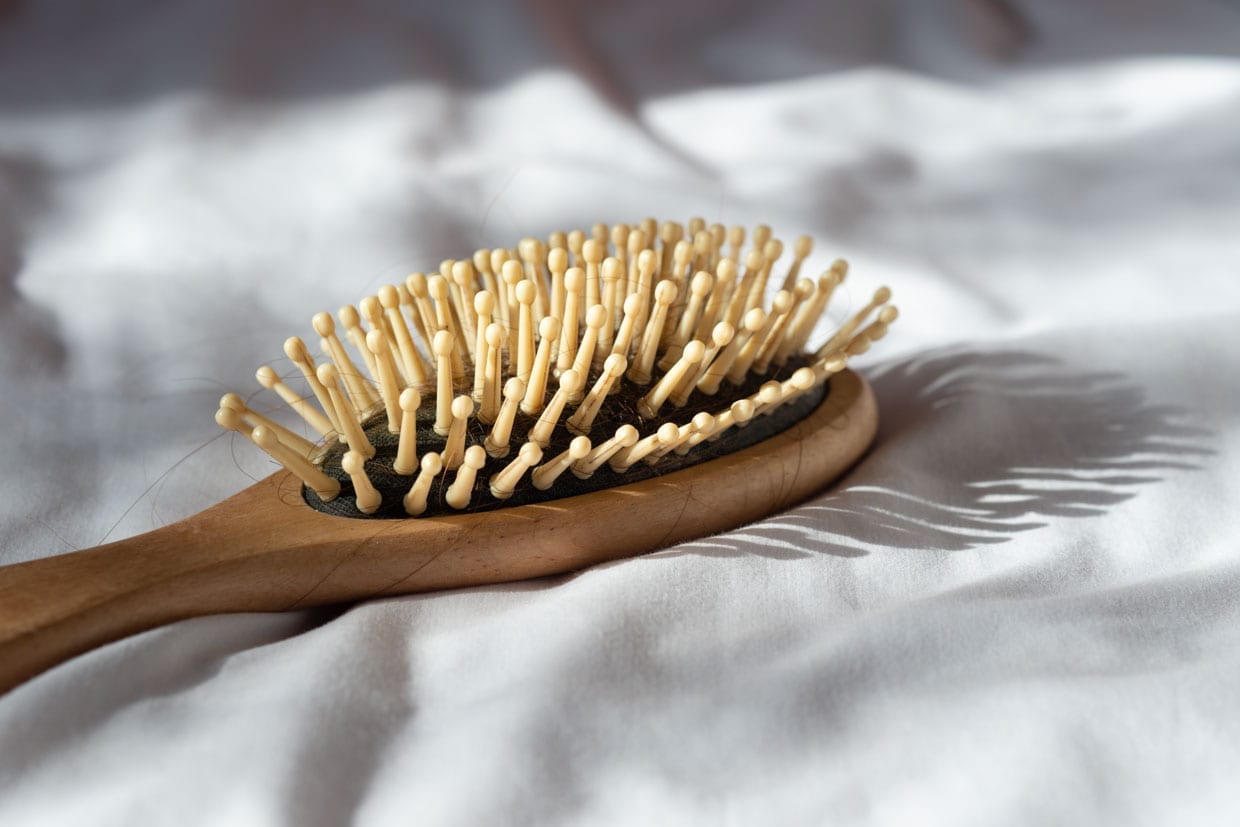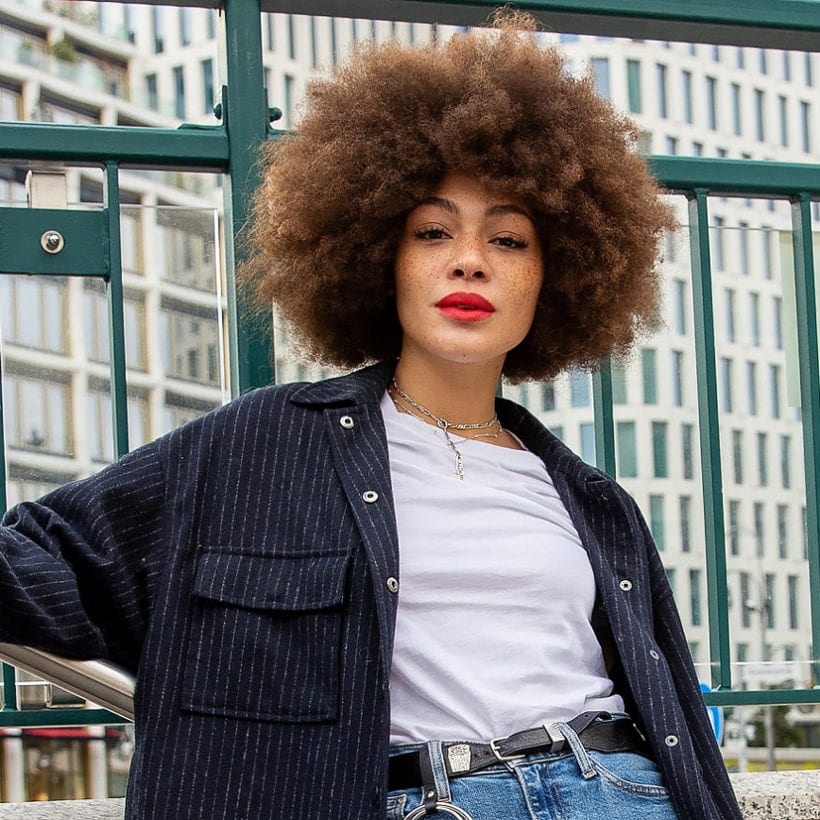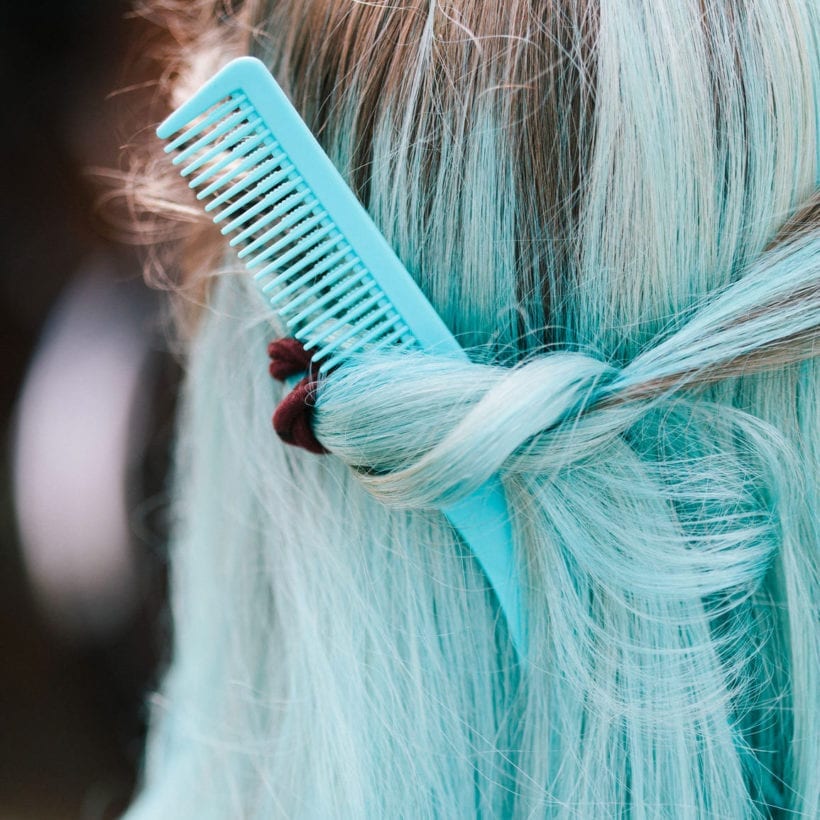Are you suddenly noticing a crazy number of strands in your hairbrush? A gradual decrease in the diameter of your top knot? Hair loss — in varying degrees — is a common concern.
First things first: Strands falling out every single day is not only normal, but it is also necessary for a healthy head of hair. “You should lose — and grow — 100 to 150 hairs a day,” says Neal Schultz, M.D., a dermatologist in New York City. “However, when your hair loss exceeds your hair growth, then there’s a net reduction in the total number of hairs and therefore, the density of your hair.”
The first step in combating hair thinning? Determine the root of the cause.
What Are Common Causes of Hair Loss?
“The first thing that has to be looked at is your hormonal status to determine if abnormal levels are affecting your hair,” says Schultz. That is because some of the main culprits of more extreme or acute hair loss include hormone-related conditions such as polycystic ovarian syndrome (PCOS) and thyroid imbalances.
There is also an autoimmune-related condition known as Alopecia Areata, which causes round bald patches to pop up, while the rest of your hair density remains intact. “In this case, lymphocytes, a type of white blood cells, are under the impression that those specific hair follicles are bad and attack them, throwing them into a state of resting because of the inflammation they cause,” explains Schultz. He adds that if you are experiencing this type of loss, or think that PCOS or thyroid issues are to blame, seeing an endocrinologist is essential. “Many of these conditions are easily treatable once diagnosed.”

On the other hand, general thinning all over can be due to life-specific hormonal fluctuations such as going on, off or swapping hormonal birth control, a recent pregnancy, and even stress.
“Anyone who has had a baby can attest that three to six months postpartum they [experienced] hair loss,” says Schultz. “Pregnancy resets the cycle of the hair follicles so more of them go to ‘sleep’ in the telogen phase, which is also known as the resting phase, at the same time. Then, post-pregnancy they also fall out at the same time.” The result: you notice significant loss all at once.
Hormones gone haywire because of changing or ditching hormonal birth control can create a similar fall-out effect in your hair. If this is you, sit tight, don’t freak out, and let your hormones rebalance. Give your hair three to six months to reset, he says.
It is no surprise that stress also plays a major role in the state of your hair. “When you’re stressed, your adrenal gland secretes cortisone and with it, a small amount of male hormone leaks out too,” explains Schultz. “If you have very low levels of male hormones normally, that can become a meaningful increase.”
Why does this matter? Well, it is possible for your hair follicles to be greatly affected by male hormones. According to Anabel Kingsley, a trichologist at the Philip Kingsley Trichological Clinic in London, even if your male hormone levels are normal, your hair follicles could be over-sensitive to it. The result: “It causes hair follicles to slowly shrink, and as a result, hairs also grow out thinner in diameter.”
Kingsley has clients use topical scalp treatments to “help tackle the miniaturization of hair.” She recommends applying Philip Kingsley Tricho 7 scalp drops, which contain a hybrid of vitamin B6, zinc sulfate and azelaic acid as well as the stimulant methyl nicotinate, all of which help create an anti-androgenic effect within hair follicles. “While you may see some new growth, the goal is to prevent further deterioration of the follicles,” she explains. Schultz says that he will prescribe the oral medication Spironolactone, which helps the body naturally block male hormones from the inside out.
Lifestyle Factors that Affect Hair Growth
Here is how to make sure you are taking a 360-approach to how your hair looks and grows inside and out.
Heat Damage

“Hair loss and breakage are different concepts that sometimes get misinterpreted,” explains Giovanni Vaccaro, artistic director at Glamsquad. One major mistake women make that causes breakage, he says, is using excessive heat when styling. “When flat-ironing or curling, strands are easily snapped if you apply too high heat to the follicle — if you smell any burning, put the iron down immediately!” Although dials often hit 450 degrees, Vaccaro says for those with fine to normal hair, 300 is all you need to get the style you want. For those with thick or textured strands, go to the 400 range but be sure to continue to glide over strands (and never hold it on one spot) to prevent scorching.
Hairstyles
One of the main heat-free causes of thinning is super tight braids and ponytails. “They cause hair to break off around the hairline or right at the scalp,” says Vaccaro, who recommends giving hair a rest in between braids and up-dos.
Coloring
You also want to be gentle when it comes to highlighting, chemically straightening and coloring to prevent breakage that can make the hair appear thinner. “Strong chemicals can weaken follicles, making them break off anywhere on strands,” says Vaccaro.
Haircare
To prevent, as well as lessen thinning caused by damage, Vaccaro suggests opting for shampoos, conditioners and hair masks that contain amino acids and antioxidants to help reduce damage and rebuild the hair follicle. And while volume-boosting formulas create temporary lift (which could be a good thing!), if you are experiencing true thinning, pick ones that actually promote hair growth.
His pick: Pure Biology Growth Stimulating And Anti Hair Loss Shampoo. “It contains biotin and keratin, proteins that hair is made up of.”
Condition
Conditioning is also key. And fine-haired girls, listen up: skipping this step because you think it weighs hair down will only exacerbate your thin hair issues. Here is why: “While adding moisture to strands won’t help grow new hair, it moisturizes follicles, which helps existing hair grow faster and prevents the hair you have from damage and splits prematurely,” says Vaccaro, who suggests Pure Biology Hair Growth Stimulating And Hair Loss Conditioner, laced with biotin and keratin, plus argan oil.
Don’t Forget the Scalp
“A clean, healthy scalp is always the best kind of scalp to promote hair growth,” he says. Vaccaro recommends using Briogeo Scalp Revival, which contains charcoal, coconut oil and tea tree oil, weekly. Or you can try Clean Rinse from Sunday Riley with glycolic and salicylic acids and rose clay. How you brush your hair also matters: “One of the easiest fixes to promoting hair health and growth is to brush your hair and brush it well,” says Vaccaro. “Use a flat natural boar bristle brush such as the Ibiza OC4 to stimulate blood flow and not tear through tangles. If you’re using a comb, make sure it has wide-set teeth and the ridges are rounded such as the Mason Pearson Detangling Comb, to glide easily through hair.”
We only recommend products we have independently researched, tested, and loved. If you purchase a product found through our links, Sunday Edit may earn an affiliate commission.
Editor’s note: This article has been updated since its original publication in March 2019.









